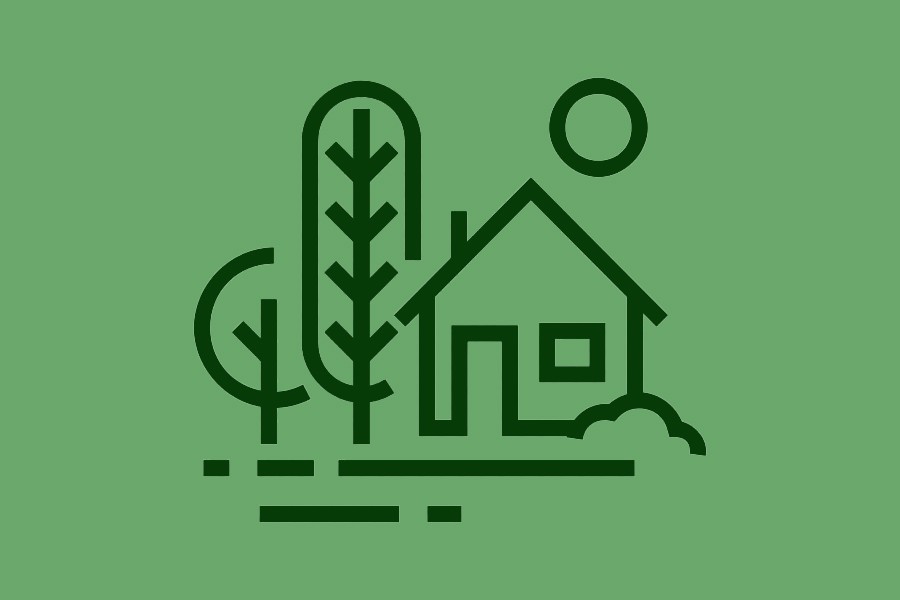Migration has long been the attention of academics and policymakers as, at macro level, remittances play a pivotal role. The role of remittances in Bangladesh's growth and development needs no elaboration as two Rs (ready-made garment and remittance) on the external account are keeping the economic wheel moving. The direct and indirect impact of foreign as well as local remittances on the reduction of poverty is amply documented in the available literature. In fact, as researches reveal, had there been no remittances flowing from other countries, the incidence of poverty in Bangladesh would have been higher by few percentage points.
A panel dataset reveals that about one-third of sample households had at least one migrant member in 2014. This implies that one in every three households appear to receive remittance as against one in four in 2008 and one in five in 2000. Of the total migrants, inside or outside, roughly one-third are destined for foreign countries, about half for other districts and one-sixths for within districts in Bangladesh. In other words, domestic migration accounts for 70 per cent of the total migration taking place.
A priori reasoning would suggest that members from relatively richer households migrate outside the country while the poorer ones migrate inside the country. It is interesting to observe that about half of the foreign migrants in 2014 constituted members of poor households - defined as owning up to 0.2ha of land (or 50 decimals). They are called functionally landless households. The proportion of this group has doubled within a decade as the share was just 25 per cent in 2000. It could further be observed that more than four-fifths of the foreign migrants in 2014 came from poor and small households who reported to own up to 1.0 hactare (about two and a half acre) as against two-thirds in 2000. On the contrary, migrants from relatively solvent groups (1.0 hactare +) constituted about one-thirds of all foreign migrants in 2000; the share dropped to only 14 per cent in 2014. The upshot is that: (a) between 2000 and 2014, most of the migrants to overseas were from relatively poor families, and (b) the share of relatively solvent families declined over time. The scenario is almost same for domestic migrants. Remittance thus is contributing to growing resilience of households in shocks.
About half of the total migrants from Sylhet and Chattogram seem to leave the country. This is in contrast to three-fourths of migrants from Rajshahi, Barishal, Rongpur and Khulna who are destined for domestic migration; again, 70 per cent of migrants from these districts migrate outside respective districts. Apparently higher wage and better amenities of life overseas pulled the former while pervasive poverty pushed the latter to migration. Among foreign migrants, about 70 per cent went to Middle East countries, 16 per cent to Asia, and 12 per cent to Europe. Those who went to the Middle East, 70 per cent are reported to be secondary dropouts, and 26 per cent reported to have crossed SSC/HSC. For Asia, the proportion is same. In Europe, only one-third of migrants are reported to be secondary dropouts. Among foreign migrants, 80 per cent have no training whatsoever and the trend is same across continents. Among those trained, driving, electrician, welding and carpentry constitute the lion share. It is thus no wonder that Bangladeshi unskilled migrants earn very low wage. The necessity of pre-migration training, if at certain costs, could be welcome.
Migration has costs - both monetary and physical. Since non-monetary costs are very difficult to measure, we shall consider the monetary cost of migration. In 2000, an overseas migrant had to spend on average $ 2,406 that rose to $3,805 in 2014. What is to be noted is that the maximum amount of cost in 2000 was $16,000 and $23,000 in 2014 which indicates the level of desperation for migration. However, against the cost of $3,805 in 2014, foreign migrants sent home annually on average about $2,413 back home. There was a time when transaction would take place mostly through 'hundi' - an unofficial channel. We have no comparable data but suffice to say that in 2014, four-fifths of the cash transfer from foreign countries was made through banks followed by only 6.0 per cent through hundi. This is a remarkable achievement as funds are now mostly flowing through official channels. No less remarkable is the change in the mode of cash transfer on the domestic front. There was a time when post office or by hand mode dominated the transaction in domestic migration. But the most recent data show that about 60 per cent of the transactions are being made through mobile phones followed by roughly 20 per cent delivered through hand or relatives. This 'revolutionary' development helped mostly the poor segment who migrated to cities to eke out a living. They can send money within few minutes to relatives back home.
Interesting insights can be found in expenditure pattern. Food expenses account for 43 per cent of total expenditure out of domestic remitted income compared to 27 per cent overseas and 31 per cent for all. About 12-14 per cent of the expenses (both domestic and foreign migrants) are earmarked for agricultural pursuits such as buying inputs, machines, land leasing and buying. Within agriculture, foreign migrants spend most of it on buying land (90 per cent). Construction/repairing and maintenance of households claim 15 per cent for domestic money and 20 per cent for foreign money, education and medical roughly 10-11 per cent each. Business, investment in government securities and stock market is very negligible. However, foreign migrants have 10 per cent bank savings compared to 3.0 per cent domestic migrants. By and large, remitted money seems to be used very rarely for productive investments.
Abdul Bayes is a former Professor of Economics at Jahangirnagar University.


